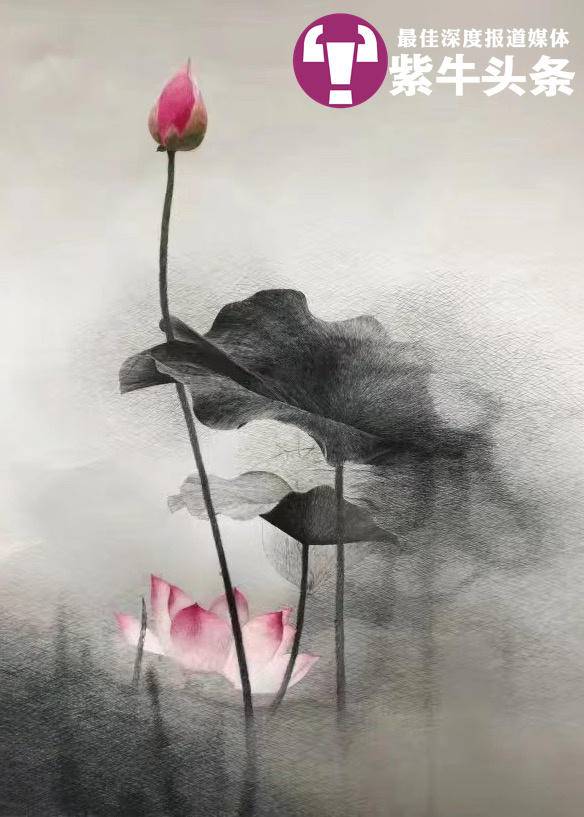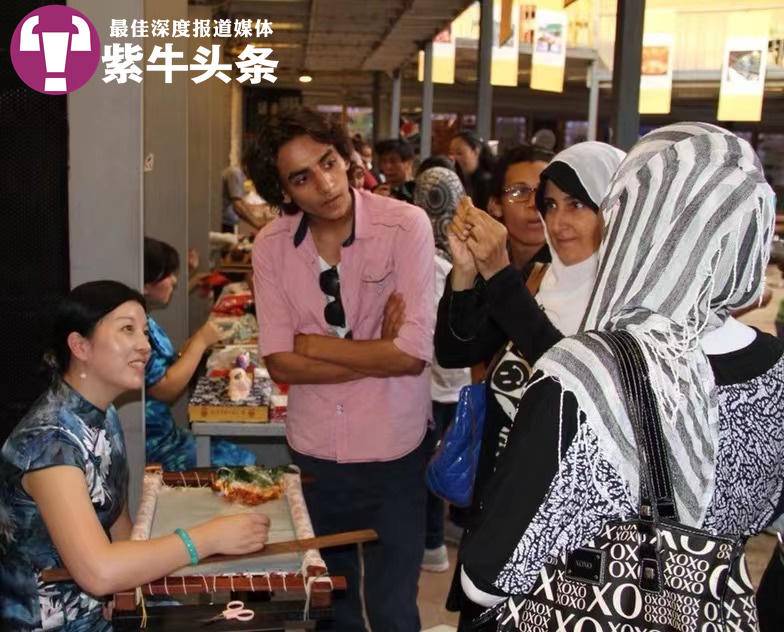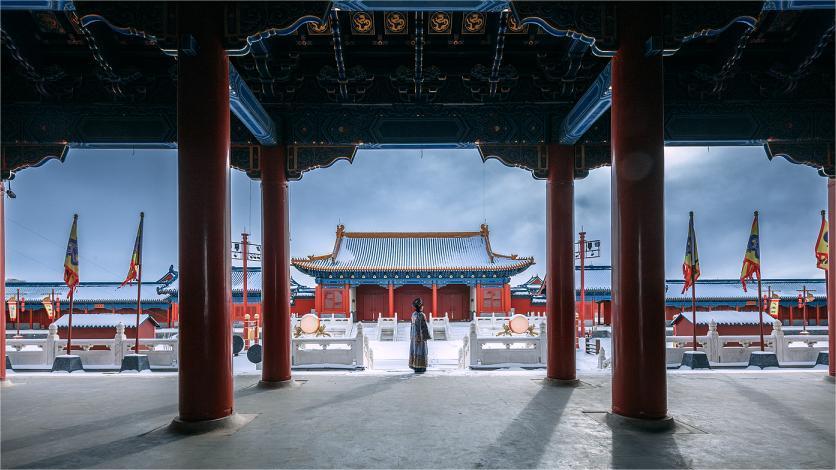Inheritor committed to passing on craft of Wuxi fine embroidery in E China's Jiangsu
Bao Wenji, a 49-year-old embroiderer in Wuxi city, east China's Jiangsu Province, has been devoting herself to the craft of Wuxi fine embroidery for 16 years.
The artistic features of Wuxi fine embroidery are mainly reflected in its small size, elaborately designed characters and patterns, and remarkable double-sided embroidery techniques.
Bao, a native of Wuxi, can show the skills of double-sided embroidery with a silk thread with a diameter of 0.004 millimeters.

Bao Wenji works on a piece of Wuxi fine embroidery work. (yangtse.com/courtesy of interviewee)
Bao was once a full-time housewife. One day in early 2007, Bao occasionally watched a TV program about Wuxi fine embroidery and knew about the recruitment of apprentices. She had never heard of Wuxi fine embroidery before, but was captivated by the exquisite craft. She then decided to sign up but forgot the registration phone number.
When she dialed a number for directory assistance, she learned that Zhao Hongyu, a Chinese embroidery master, lived in the upstairs apartment of the operator. Bao immediately contacted Zhao, who was reluctant to instruct her at first.
With perseverance and determination, Bao finally convinced Zhao, and learned the Wuxi fine embroidery under Zhao's guidance in the same year, devoting herself wholeheartedly to studying double-sided embroidery techniques.
Silk thread for this embroidery is split into as many as 70 or 80 strands, and it is so thin that the embroidery appears vivid even under a magnifying glass, according to Bao.

Photo shows a piece of Wuxi fine embroidery work of Bao Wenji. (yangtse.com/courtesy of interviewee)
Wuxi fine embroidery requires great patience. It usually takes several months, or even years, to complete a piece of embroidery work.
Bao said she and the other two embroiderers spent three years finishing a piece of embroidery work measuring 90 centimeters by 135 centimeters. The work won a gold prize during an arts and crafts competition in 2020.
It took Bao two years and seven months to independently complete one of her representative embroidery works featuring 37 different yet vivid figures.
When Bao started engaging in the sector, Zhao told her that the ability to endure loneliness and live a simple life is a necessary condition for an embroiderer.
After she finished her apprenticeship, she worked at a private art museum and later ran two studios, which had suffered losses until this year. To keep her studios alive, she even sold an apartment and a car.
With her embroideries winning prizes at the national, provincial, and municipal levels, Bao received many accolades, including being recognized as a representative inheritor of the craft of Wuxi fine embroidery at the municipal level, and as a senior artist.

Photo shows foreigners interested in Wuxi fine embroidery. (yangtse.com/courtesy of interviewee)
Bao has enabled more people to feel the charm of Wuxi fine embroidery through short videos and other platforms. She once traveled to as many as 50 cities to promote the craft in one year, and was invited to countries like France, Germany, the Netherlands and Türkiye for cultural exchanges, showcasing the charm of the craft. Students from the U.K., France, the U.S., and other countries learned the craft at her studios and applied the techniques to their fashion designs.
Bao has six apprentices. She has made many attempts to sustain the long-term survival of her studios. She collaborates with schools to guide students on how to make embroidery works, lends embroidery works out for exhibitions, or rents them to entrepreneurs to decorate offices, and attends commercial activities to increase the incomes of her apprentices.

Bao Wenji introduces Wuxi fine embroidery to students. (yangtse.com/courtesy of interviewee)
Bao has also launched fine embroidery derivatives, allowing more people to own them at more affordable prices. The move has made an increasing number of people fall in love with fine embroidery and further expanded the market channels of fine embroidery products.
This year, Bao's studios have achieved a revenue of 1 million yuan ($140,000), turning in a profit for the first time. This has increased her confidence in passing on the intangible cultural heritage of Wuxi fine embroidery.
Photos
Related Stories
- Chinese embroidery artist takes ethnic cultural heritages to world
- Company in China's Henan sells wedding embroideries abroad
- Embroidery cooperative dedicated to inheritance of Kirgiz embroidery in NW China's Xinjiang
- Hard-of-hearing embroiderer from NW China's Xinjiang wins global recognition
- Trending in China | Reviving the craft of making hand-embroidered cuju balls
- Pic story of inheritor of Miao embroidery in Guizhou
Copyright © 2024 People's Daily Online. All Rights Reserved.









